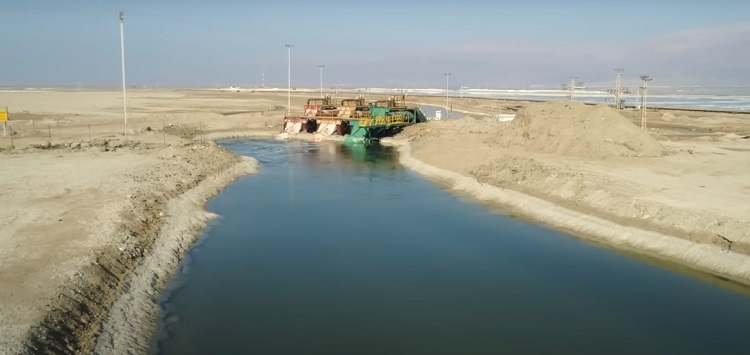On Tuesday, the Israel Defense Forces (IDF) officially acknowledged the use of seawater to flood certain tunnels in the Gaza Strip, confirming previous speculations.
The IDF, in collaboration with Defense Ministry officials, developed specific tools for injecting high-flow water into Hamas tunnels.
This method is one among several tools the IDF employs to address tunnel threats. It’s important to note that not all tunnels are subjected to flooding, as the process involves attaching pipes and pumps to shafts and may cause severe damage in some areas.
The IDF emphasized that before initiating the flooding procedure, comprehensive preemptive checks are conducted, including a thorough analysis of the soil and water system in the area, ensuring that groundwater remains uncontaminated.
Additionally, various methods are employed to neutralize Hamas tunnels, such as aerial attacks, underground maneuvers, and special operations.
IDF Tests Flooding Method in Combat Strategy

In a successful trial run in mid-December, the IDF tested the flooding method as part of new combat strategies to address terrorists hiding underground.
Responding to concerns about potential harm to hostages held by Hamas, IDF Spokesman Real Adm. Daniel Hagari assured that operations were intelligence-driven, avoiding deliberate actions that might endanger hostages.
Israeli defense officials recently estimated the extensive length of Hamas’s tunnel network at 350-400 miles, accessed through around 5,700 shafts.
The IDF disclosed that Hamas invested significant resources, using over 6,000 tons of concrete and 1,800 tons of steel, with estimated expenditures in the tens of millions of dollars.
Since the October 7 massacres, Israeli forces have been actively destroying tunnels linked to Hamas, uncovering more of the organization’s underground network.
Troops are likely to discover tunnels beneath areas with schools, hospitals, or mosques, and dismantling the network may take years, according to an official source.
